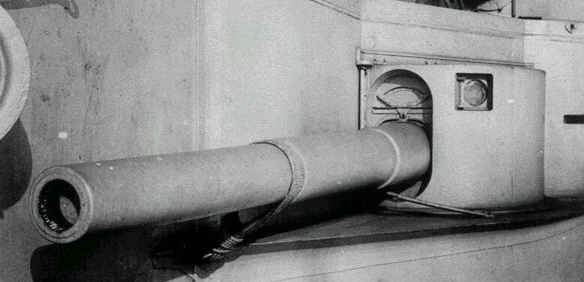A good, reliable weapon used as secondary armament on battleships and battlecruisers as well as on most cruisers built during World War I. Some pre-war cruisers were rearmed with these weapons during the war.
In the 1920s, this weapon was used to arm the Light Cruiser Emden. During the Second World War, it was notable for equipping some of the famous merchant raiders and was used in coastal artillery batteries.
Constructed of A tube and two layers of hoops. Used the Krupp horizontal sliding wedge breech block.
All German 15 cm guns had an actual bore diameter of 14.91 cm (5.87 in).
| Designation | 15 cm/45 (5.9") SK L/45 |
|---|---|
| Ship Class Used On | Most Capital Ships of World War I
Frankfurt, Elbing, Bremse, Königsberg (II), Dresden (II) cruiser classes Many cruisers were rearmed with this gun 1915-1918 Emden (1925) Merchant Raider Ships of World War II |
| Date Of Design | 1906 |
| Date In Service | 1908 |
| Gun Weight | 12,632 lbs. (5,730 kg) |
| Gun Length oa | 264.2 in. (6.710 m) |
| Bore Length | 249.1 in (6.326 m) |
| Rifling Length | 200.6 in (5.095 m) |
| Grooves | 48 |
| Lands | N/A |
| Twist | RH Increasing from 1 in 45 to 1 in 30 at the muzzle |
| Chamber Volume | 1,324 in3 (21.7 dm3) |
| Rate Of Fire | 5 - 7 rounds per minute 1 |
- ^In "Jutland: An Analysis of the Fighting" by John Campbell, it is stated that German capital ships were provided with an ammunition hoist for each 15 cm (5.9") gun and that these could provide 7 or more complete rounds per minute. For light cruisers the rate of supply was about three to five rounds per minute per gun once the ready ammunition had been used up.
| Type | Separate |
|---|---|
| Projectile Types and Weights 1a | World War I
AP L/3,7 C/09: 99.8 lbs. (45.3 kg) HE L/4,1 base fuze: 99.8 lbs. (45.3 kg) HE L/4,1 nose fuze L/4,1: 99.8 lbs. (45.3 kg) World War II
|
| Bursting Charge | World War I 2a AP L/3,7 C/09: 2.19 lbs. (0.99 kg) TNT HE L/4,1 base fuze: 8.2 lbs. (3,584 kg) TNT HE L/4,1 nose fuze: 8.5 lbs. (3,862 kg) TNT World War II 3a |
| Projectile Length | World War I
HE L/4,1 base fuze: 24.2 in (61.5 cm) HE L/4,1 nose fuze: 24.2 in (61.5 cm) World War II
|
| Propellant Charge | World War I
29.2 lbs. (13.2 kg) RP C/06 31.2 lbs. (13.7 kg) RP C/12 World War II
|
| Cartridge Case Type, Size and Empty Weight | Brass, 150 x 865 mm
World War I Filled Cartridge: 49.8 lbs. (22.6 kg) World War II Filled Cartridge: 50.2 lbs. (22.8 kg) |
| Muzzle Velocity | 2,740 fps (835 mps) |
| Working Pressure | 20.0 tons/in2 (3,150 kg/cm2) |
| Approximate Barrel Life | 1,400 rounds |
| Ammunition stowage per gun | Nassau, Helgoland, von der Tann, Moltke, Brummer: 150 rounds 6a Kaiser, König, Bayern, Seydlitz, Derfflinger, Mackensen: 160 rounds 7a Blücher (1914): 165 rounds Wiesbaden: 128 rounds Königsberg (1918), Cöln: 130 rounds Emden (1925): 120 rounds |
- ^
Actual German designations APC L/3,7 15 cm Pzgr. L/3,7 HE L/4,1 base fuze 15 cm Spgr. L/4,1 Bdz (m.Hb) HE L/4,1 nose fuze 15 cm Spgr L/4,1 Kz Illumination L/3,6 15 cm Lg L/3,6 - ^Burster weights (reiner Sprengstoff) for World War I from "Diagrams of Great War."
- ^Burster weights (reiner Sprengstoff) for World War II from M.Dv. Nr. 198.
- ^The burster for the World War II HE L/4,1 base fuze projectile was made from Fp 1.
- ^The burster for the World War II HE L/4,1 nose fuze projectile was made from Fp 02.
- ^These early capital ships carried 50 AP and 100 HE nose fuze per gun.
- ^These later capital ships carried about 55 AP and 105 HE nose fuze per gun.
| Elevation | Range |
|---|---|
| 19 degrees | 14,760 yards (13,500 m) |
| 20 degrees | 16,300 yards (14,900 m) |
| 22 degrees | 17,280 yards (15,800 m) |
| 25 degrees | 18,040 yards (16,500 m) |
| 27 degrees | 18,373 yards (16,800 m) |
| 30 degrees | 19,250 yards (17,600 m) |
| 45 degrees
(Proving Grounds) |
20,120 yards (18,400 m) |
| Elevation | Range |
|---|---|
| 30 degrees
(World War II Raiders) |
21,220 yards (19,400 m) |
During World War II, Merchant Raiders armed with these guns were apparently supplied with the more streamlined shells as used for the 15 cm/55 SK C/28.
| Designation | Single pedestal mounts in casemates
Nassau (12), Helgoland (14), Kaiser (14), von der Tann (10), Moltke (12) and Blücher (8): MPL C/06 König (14), Seydlitz (12), Derfflinger (12) and Lützow (14): MPL C/06.11 Bayern (16), Hindenburg (14) and Mackensen (14): MPL C/13 Single pedestal mounts in open half-shields
|
|---|---|
| Weight | MPL C/06: 34,767 lbs. (15,770 kg)
MPL C/06.11: 36,449 lbs. (16,533 kg) MPL C/13: 39,573 lbs. (17,950 kg) MPL C/14: 35,681 lbs. (16,185 kg) MPL C/16: 37,734 lbs. (17,116 kg) |
| Elevation 2b | MPL C/06: -7 / +20 degrees
MPL C/06.11: -10 / +19 degrees MPL C/13: -8.5 / +19 degrees MPL C/14: -10 / +22 degrees MPL C/16: -10 / +27 degrees World War II Raiders: -10 / +30 degrees |
| Elevation Rate | Manual operation, only |
| Train | about +150 / -150 degrees |
| Train Rate | Manual operation, only |
| Gun recoil | MPL C/06: 11.4 in (29.0 cm)
MPL C/06.11: 16.9 in (43.0 cm) MPL C/13: 17.1 in (43.5 cm) MPL C/14: 17.1 in (43.5 cm) MPL C/16: 17.7 in (45.0 cm) |
- ^Emden was rearmed with 15 cm/48 SK C/36 guns in 1942.
- ^The elevations shown above are "as designed." After the Battle of Jutland (Skagerrak), many mountings were modified to increase their maximum elevations to +22 or +25 degrees. Some MPL C/13 were modified to allow +22 degrees and this increased the total weight to 40,454 lbs. (18,350 kg). Late in the war, some light cruisers may have been modified to increase elevation to +30 degrees and these were probably the mountings that were used on the Merchant Raiders of World War II.
- British postwar examination of Baden found that the German ammunition supply for secondary guns was superior to their own. Baden had a dredger hoist for each gun running directly from the magazine to the casemate carrying both projectile and charge. Projectile fuzes were protected by a leather cap during the hoist. Dredger hoists were equipped with sliding anti-flash doors and an external waiting tray. Hoists were powered by electric motors at the top of the hoist, presumably to eliminate a fire hazard in the magazines. Baden was equipped with five combined magazines and shell rooms on each side. The British also commented favorably on the MPL mountings having +19 degree elevations, considerably more than those on British capital ships. The British determined that the flash protection for the casemates on Baden to be much improved over those for earlier German ships.
- Crew was nominally eight men: Elevation, Training, Range Setter, Deflection Setter, First Loader, Second Loader, Rammer man and Breech worker.
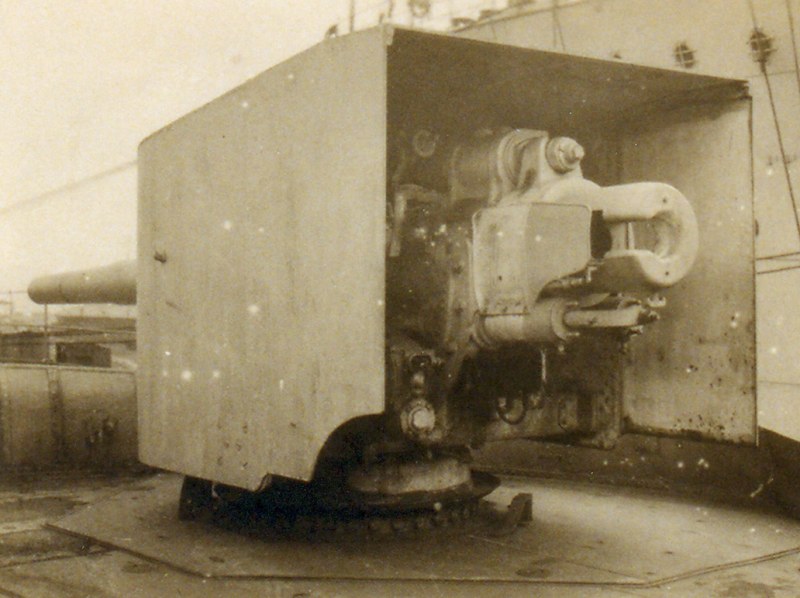
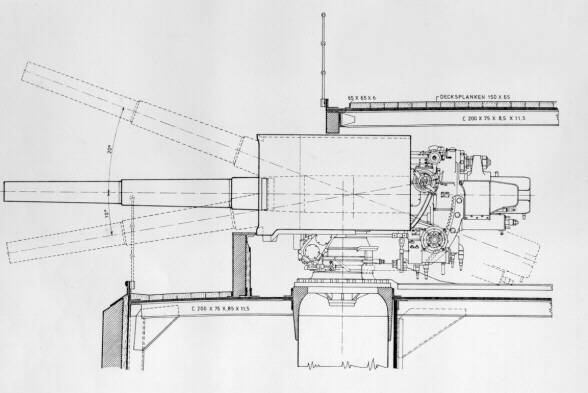
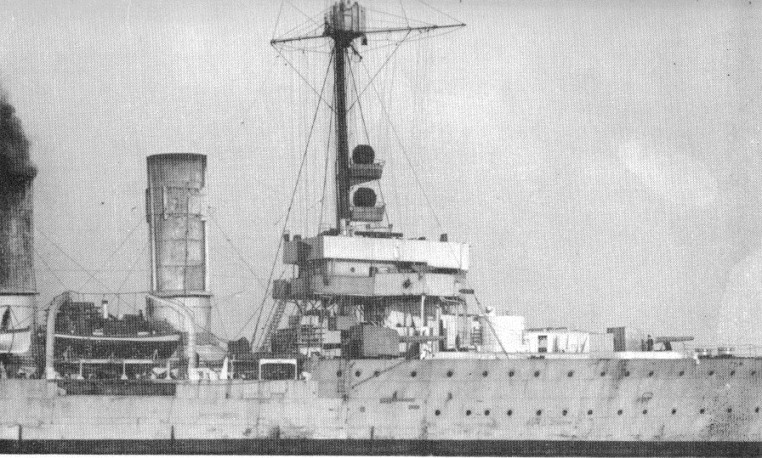
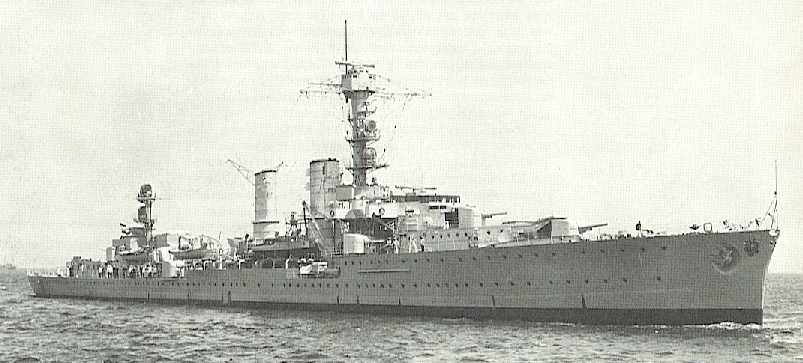

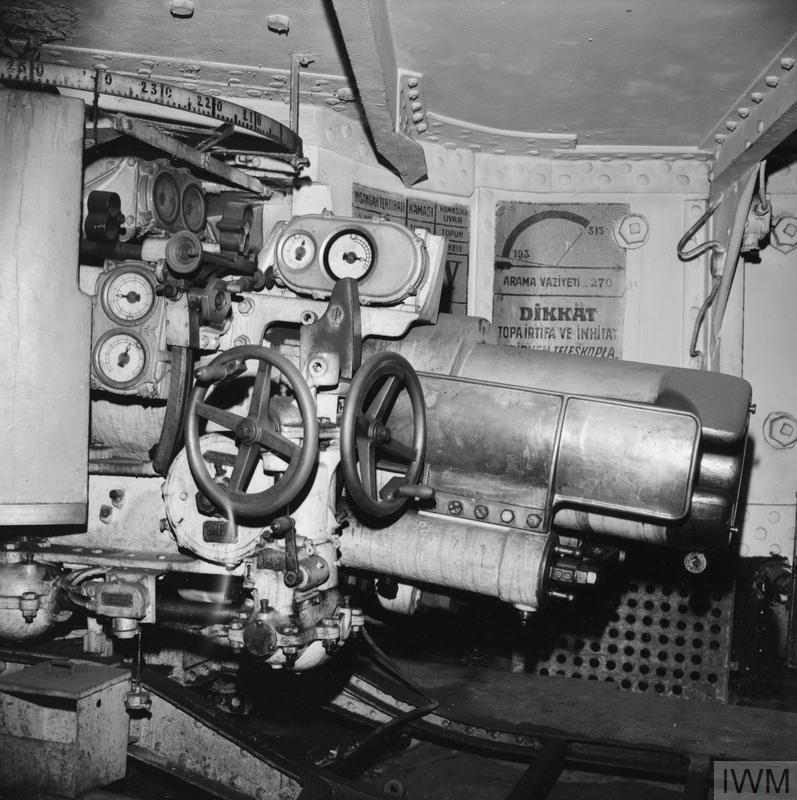

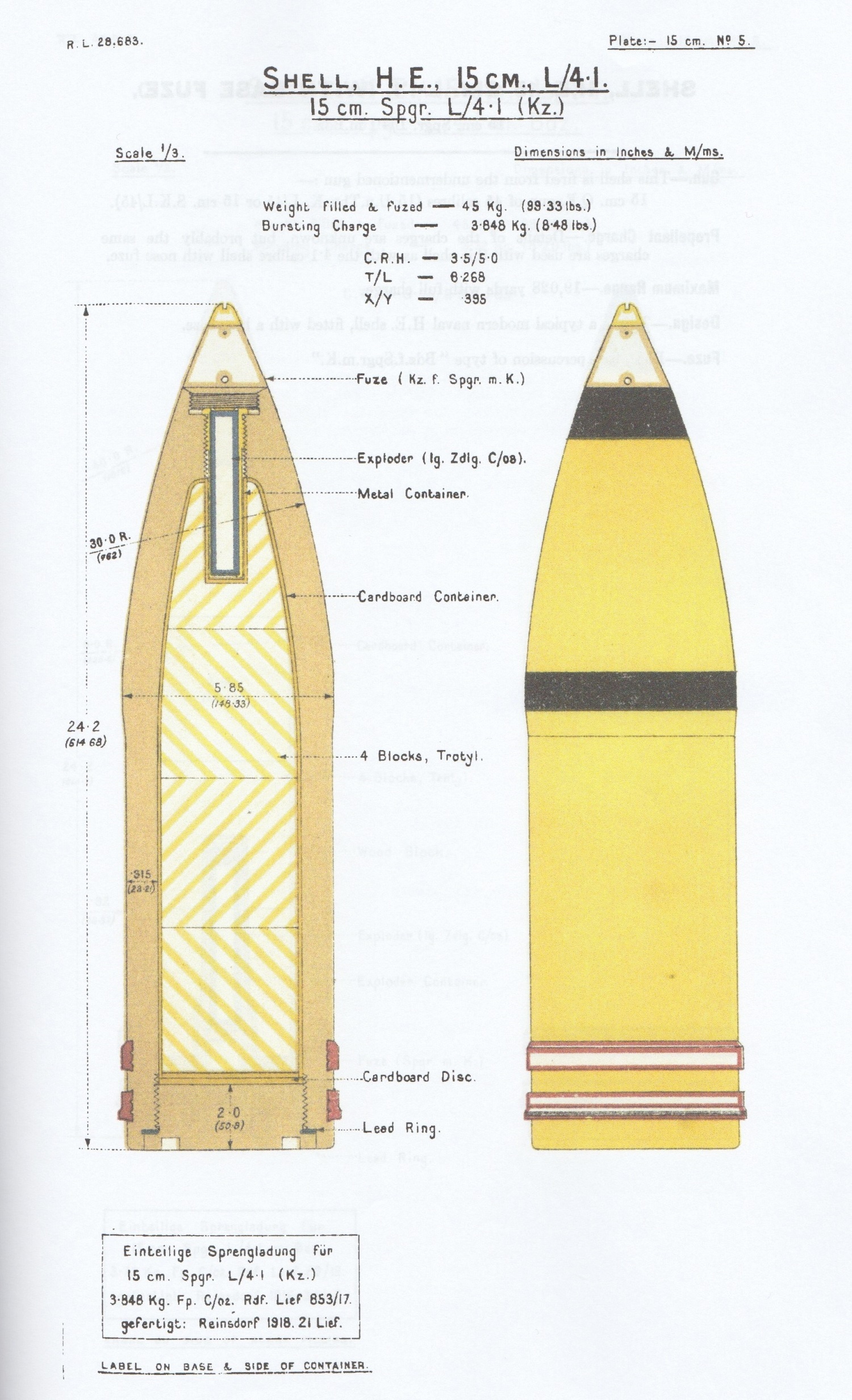
"Jutland: An Analysis of the Fighting" and "Naval Weapons of World War Two" both by John Campbell
"Naval Weapons of World War One" by Norman Friedman
"German Warships 1815-1945" by Erich Gröner
"German Battlecruisers 1914-18" and "German Battlecruisers of World War One" both by Gary Staff
"German Warships of World War I" by John C. Taylor
"German Cruisers of World War Two", "Cruisers of World War Two" and "German Capital Ships of World War Two" all by M.J. Whitley
---
"Diagrams of Great War - German Naval Guns; Shells & Explosives; Fuses & Exploders" by The Royal Laboratory Woolwich 1921-22
"Übersicht über die für die Marinegeschütze und deren Abk K zu verwendende Munition und ihre Einzelteile einschließlich Salut-
und Manöverladungen" M.Dv. Nr. 198 by Oberkommando der Kriegsmarine
---
Tony DiGiulian's personal data files
---
Special Help from Peter Lienau
06 July 2007 - Benchmark
20 May 2012 - Added picture of Königsberg
25 November 2012 - Added details on ammunition and mountings
06 December 2014 - Added minor details and photograph of Frankfurt
30 April 2020 - Converted to HTML 5 format, reorganized notes and added
Aubrey Houston Bowden collection photographs of Goeben / Yavuz
16 April 2021 - Corrected typographical error
17 November 2022 - Added sketches of base and nose fuzed projectiles
29 April 2024 - Added ammunition notes
20 August 2024 - Added burster notes

